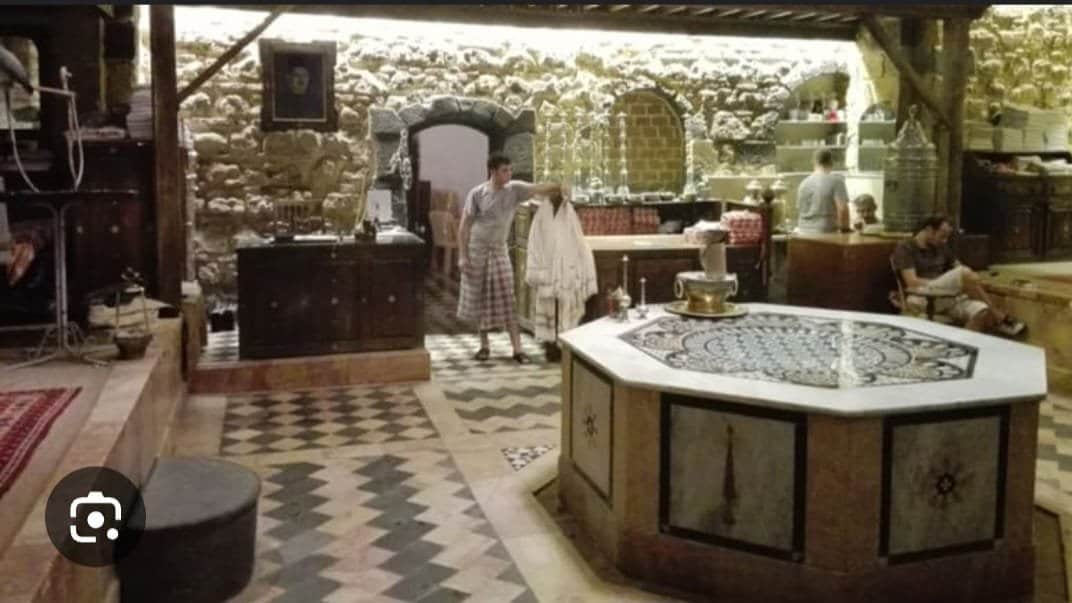The Damascus Public Bathhouse
Old Damascene houses are known for being large and spacious. They typically feature a courtyard for receiving guests, bedrooms, pantries, bright terraces, a kitchen, and a central courtyard with a fountain and citrus trees like citron, bitter orange, and lemon. However, they lacked having a bathroom for bathing inside the house itself! Thus, public bathhouses emerged, The Damascus Public Bathhouse has been a defining feature of the city’s culture, providing a communal space when private bathing facilities were absent in traditional homes.
The city of Damascus has been distinguished since ancient times by the abundance of water that reaches all its neighborhoods and houses, including the large bathhouses that Damascenes have excelled at in decorating and adorning. Despite the abundance of water in the city itself, rooms for bathing were not present in Damascene homes regardless of their size and design. In every neighborhood, there was a specific public bathhouse for its residents called “the public bathhouse.”
Activities in the Public Bathhouse
Going to the bathhouse was a pleasure in itself for both men and women, with each gender having designated times to bathe. They would gather there with neighbors and relatives, engaging in conversations, laughter, and camaraderie.
The public bathhouse was a place where women would gather on various occasions such as engagement parties, weddings, and childbirth. They would seize the opportunity to sing and dance, entertaining themselves.
Similarly, men had specific times to gather with friends and relatives, singing traditional Damascene songs accompanied by the oud and the daf. If one of the attendees was a groom-to-be, his friends would organize a celebration for him inside the bathhouse.
Components and Sections of the Public Bathhouse
According to the known sections of the bathhouse—”the inner section,” “the middle section,” and “the outer section”—a person is welcomed by the attendant who hands them the bathing attire. The person then enters the inner section, where rising steam and high temperature are present, and is scrubbed by a professional scrubber (kiyas). Scrubbing is akin to a strong massage that helps stimulate blood circulation and invigorates the veins.
After finishing the bathing process, the bather moves to the middle section, wrapped in towels, where the temperature is lower. This section is the most enjoyable part of the bathhouse experience where most of the entertaining activities take place. Finally, the bather enters the outer section, the last stage, where they dress in clean clothes and prepare to leave the bathhouse without the fear of catching a cold, as the temperature in this section is close to the outside weather. The bather leaves the public bathhouse with a refreshed and relaxed mind, feeling as if they have enjoyed the blessing of cleanliness and bathing, leaving behind the dirt and grime of the body and spirit. In general, people considered the bathhouse a heavenly experience and would greet those leaving with the phrase “Na’iman” (Enjoy your bath).
Present Day
Nowadays, Damascene houses have internal bathrooms, yet people still visit the public bathhouse to revive old traditions and enjoy pleasant times. Among the bathhouses that still exist today are the Zaher Baybars Bath and the Nasser Bath.
Thank you for reading my blog and I would love for you to read my blogs and visit my campaign to get to know me 😀.


